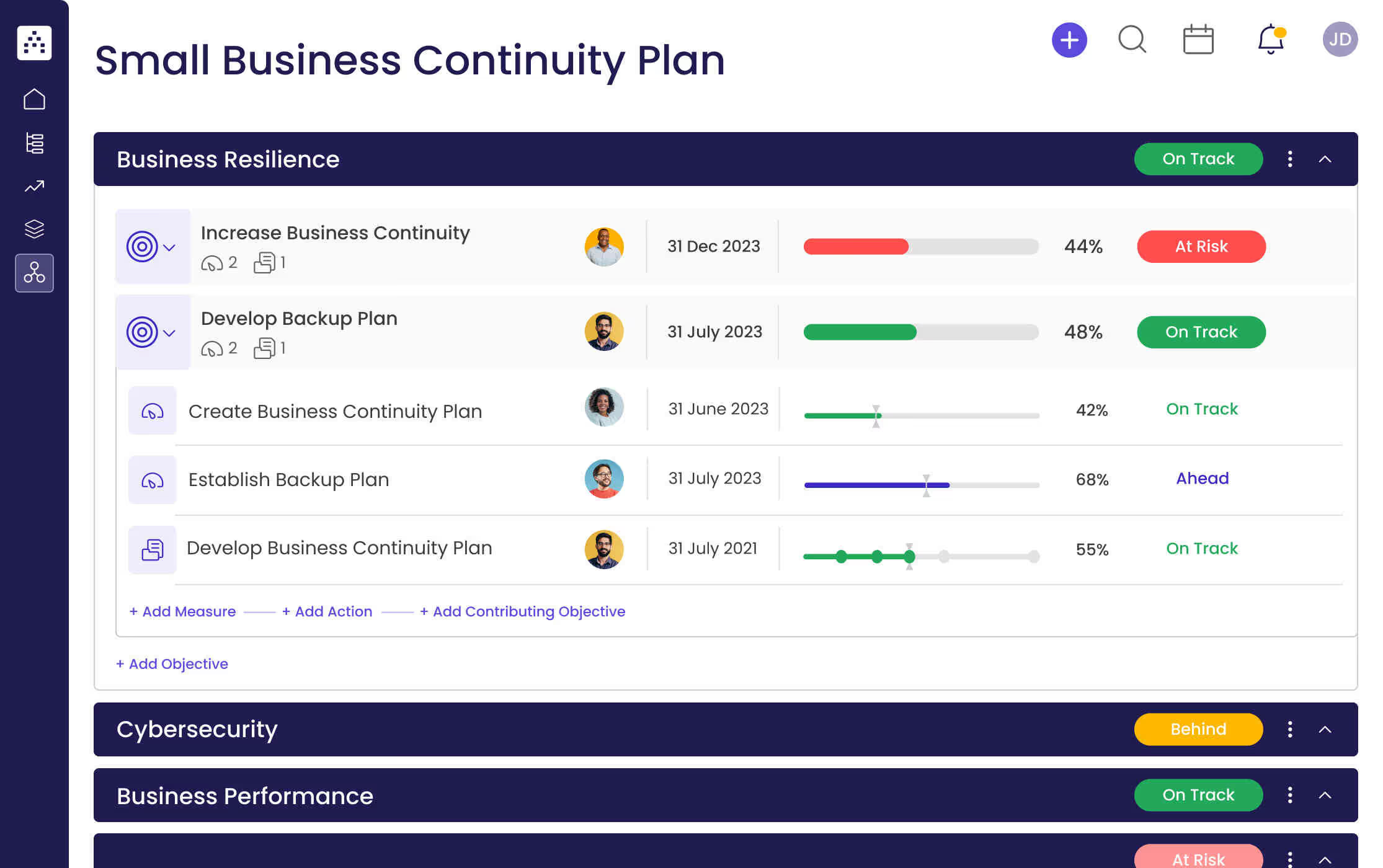What is a Small Business Continuity Plan?
A small business continuity plan outlines how a business will continue to operate during a crisis, natural disaster, or other unforeseen event. This plan should include the resources and steps needed to keep business operations going, as well as strategies for recovering from the disruption. It should also cover how the business can protect its employees, customers, and other stakeholders from harm.
What's included in this Small Business Continuity Plan template?
- 3 focus areas
- 6 objectives
- 6 projects
- 6 KPIs
Each focus area has its own objectives, projects, and KPIs to ensure that the strategy is comprehensive and effective.
Who is the Small Business Continuity Plan template for?
This Small Business Continuity Plan template is designed for small business owners and teams who need to create a plan for business continuity. It will help you identify the focus areas, objectives, and measurable targets (KPIs) necessary to support your business during a disruption, and will provide guidance on how to implement related projects to achieve the KPIs.
1. Define clear examples of your focus areas
Your focus areas should be the areas of your business that you need to prioritize during a disruption, such as business resilience, cybersecurity, and business performance. These focus areas will help you identify the objectives, measurable targets (KPIs), and projects that need to be addressed during a disruption.
2. Think about the objectives that could fall under that focus area
Each focus area should have a few objectives that are specific, measurable, achievable, realistic, and time-bound. Examples of some objectives for the focus area of Business Resilience could be: Increase Business Continuity, and Develop Backup Plan.
3. Set measurable targets (KPIs) to tackle the objective
For every objective, you should set measurable targets (KPIs) that will help you track progress and measure success. Each KPI should have an initial value, a target value, and a unit of measure. An example of a KPI for the focus area of Business Resilience could be: Create Business Continuity Plan.
4. Implement related projects to achieve the KPIs
Once you’ve identified your focus areas, objectives, and measurable targets (KPIs), you can start to implement related projects to achieve the KPIs. These projects can include activities such as developing a business continuity plan, creating a backup plan, or implementing security protocols.
5. Utilize Cascade Strategy Execution Platform to see faster results from your strategy
Cascade’s Strategy Execution Platform is a powerful tool that allows you to quickly and easily track progress toward your objectives. With Cascade, you can create detailed plans, set measurable targets (KPIs), monitor progress in real-time, and make adjustments as needed to ensure your business is resilient during a disruption.


